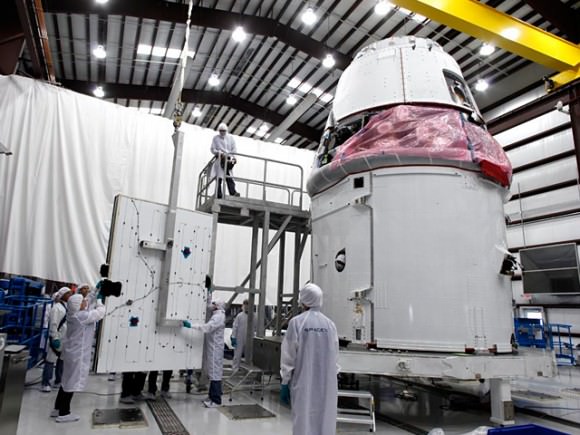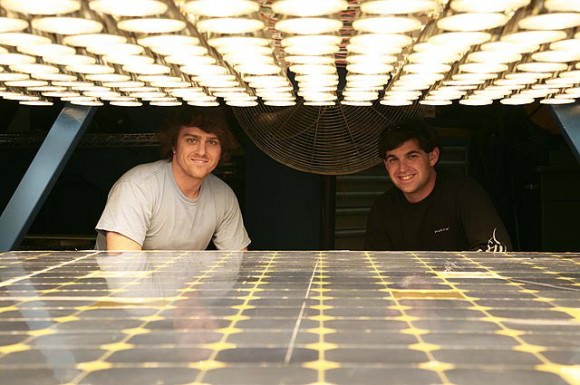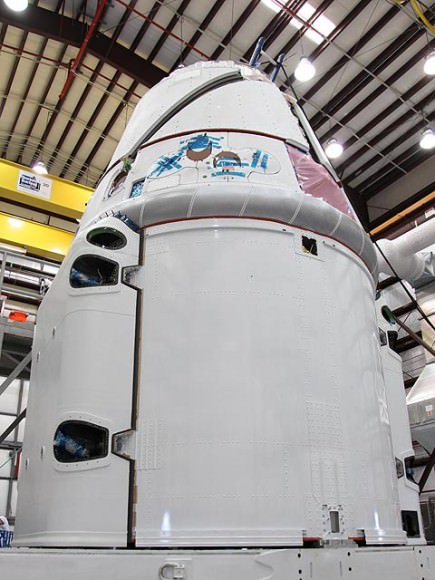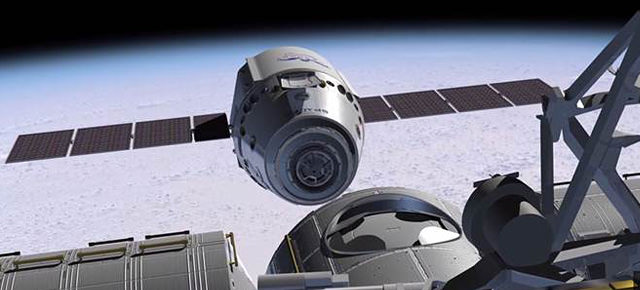[/caption]
The Dragon has grown its mighty wings
SpaceX’s Dragon spacecraft has gotten its wings and is set to soar to the International Space Station (ISS) in about a month. NASA and SpaceX are currently targeting a liftoff on Feb. 7 from Space Launch Complex 40 at Cape Canaveral Air Force Station in Florida.
Dragon is a commercially developed unmanned cargo vessel constructed by SpaceX under a $1.6 Billion contract with NASA. The Dragon spacecraft will launch atop a Falcon 9 booster rocket also built by SpaceX, or Space Exploration Technologies.

The Feb. 7 demonstration flight – dubbed COTS 2/3 – represents the first test of NASA’s new strategy to resupply the ISS with privately developed rockets and cargo carriers under the Commercial Orbital Transportation Services (COTS) initiative.
Following the forced retirement of the Space Shuttle after Atlantis final flight in July 2011, NASA has no choice but to rely on private companies to loft virtually all of the US share of supplies and equipment to the ISS.
The Feb. 7 flight will be the first Dragon mission actually tasked to dock to the ISS and is also the first time that the Dragon will fly with deployable solar arrays. The twin arrays are the primary power source for the Dragon. They will be deployed a few minutes after launch, following Dragon separation from the Falcon 9 second stage.
The solar arrays can generate up to 5000 watts of power on a long term basis to run the sensors and communications systems, drive the heating and cooling systems and recharge the battery pack.
SpaceX designed, developed and manufactured the solar arrays in house with their own team of engineers. As with all space hardware, the arrays have been rigorously tested for hundreds of hours under the utterly harsh conditions that simulate the unforgiving environment of outer space, including thermal, vacuum, vibration, structural and electrical testing.

The two arrays were then shipped to Florida and have been attached to the side of the Dragon’s bottom trunk at SpaceX’s Cape Canaveral launch processing facilities. They are housed behind protective shielding until commanded to deploy in flight.
Video Caption: SpaceX testing of the Dragon solar arrays. Credit: SpaceX
I’ve toured the SpaceX facilities several times and seen the Falcon 9 and Dragon capsule launching on Feb. 7. The young age and enthusiasm of the employees is impressive and quite evident.
NASA recently granted SpaceX the permission to combine the next two COTS demonstration flights into one mission and dock the Dragon at the ISS if all the rendezvous practice activities in the vicinity of the ISS are completed flawlessly.

The ISS crew is eagerly anticipating the arrival of Dragon, for whch they have long trained.
“We’re very excited about it,” said ISS Commander Dan Burbank in a televised interview from on board the ISS earlier this week.
The ISS crew will grapple the Dragon with the station’s robotic arm when it comes within reach and berth it to the Earth-facing port of the Harmony node.
“From the standpoint of a pilot it is a fun, interesting, very dynamic activity and we are very much looking forward to it,” Burbank said. “It is the start of a new era, having commercial vehicles that come to Station.”
Burbank is a US astronaut and captured stunning images of Comet Lovejoy from the ISS just before Christmas, collected here.
Read recent features about the ISS and commercial spaceflight by Ken Kremer here:
Dazzling Photos of the International Space Station Crossing the Moon!
Absolutely Spectacular Photos of Comet Lovejoy from the Space Station
NASA announces Feb. 7 launch for 1st SpaceX Docking to ISS
Jan 11: Free Lecture by Ken at the Franklin Institute, Philadelphia, PA at 8 PM for the Rittenhouse Astronomical Society. Topic: Mars & Vesta in 3 D – Plus Search for Life & GRAIL


Delivered to space from fiery plume, above earth and sky, from shell a Dragon will be loosed to fly!
This beast born of technology, powered will be, through wings unfolded to the Sun’s energy.
Under stars of darkest night, this science conception, a preordained target will seek above earth-light.
_____________________
The time from wake of fiery-hatching to delicate capture, will be a tense and anxious span of flight, for all whose enthusiastic work, dreams and hopes, her glittering wings will bear in distant tracking sight.
If for no other reason – and vital ones there may be – for their sakes, I hope for her success, and that in triumph of first endeavor, she will a future progeny raise, to fire into the night another Earth day, and sail on electric wings above the clouds.
Ah, so that was what those fairings were!
I like that, they seem less constrained for future expansion by placement and folding constraints than the MPCV circularly unfolding ones. This is for when going into interplanetary space.
Funnily I can’t seem to google up some info on the latter’s placement and power.
Are they refolded for reentry, or ejected? Is the heat shield underneath the bottom or does the capsule separate and land alone?
It is my understanding that the cargo fairing is separated and uncover the heat shield under the capsule before reentry. So the solar panels go with the fairing, and the recharged battery pack is used for power.
The cargo fairing separation would explain the difference in up and down mass capability.
Great progress from SpaceX, though most of this article is just a re-post from SpaceX release. This is a real change in space industry with the first comercial flight to the ISS and with substantially reduced costs. This is the begining of a new era in spaceflight that opens up endless posibilities and the stepping stone to two more fundamental changes man rating of a comercial orbital crew transport and getting orbital rockets to be re-usable. Once SpaceX acheves these goals we will truly see incredible changes to space industry.